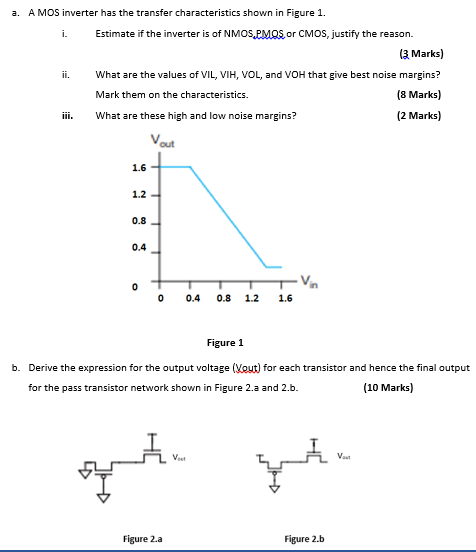a. A MOS inverter has the transfer characteristics shown in Figure 1. i. Estimate if the inverter is of NMOS, PMQS or CMOS, justify the reason. (3 Marks) ii. What are the values of VIL, VIH, VOL, and VOH that give best noise margins? Mark them on the characteristics. (8 Marks) iii. What are these high and low noise margins? (2 Marks) Figure 1 for the pass transistor network shown in Figure 2.a and 2.b (10 Marks) Figure 2.a Figure 2.b
